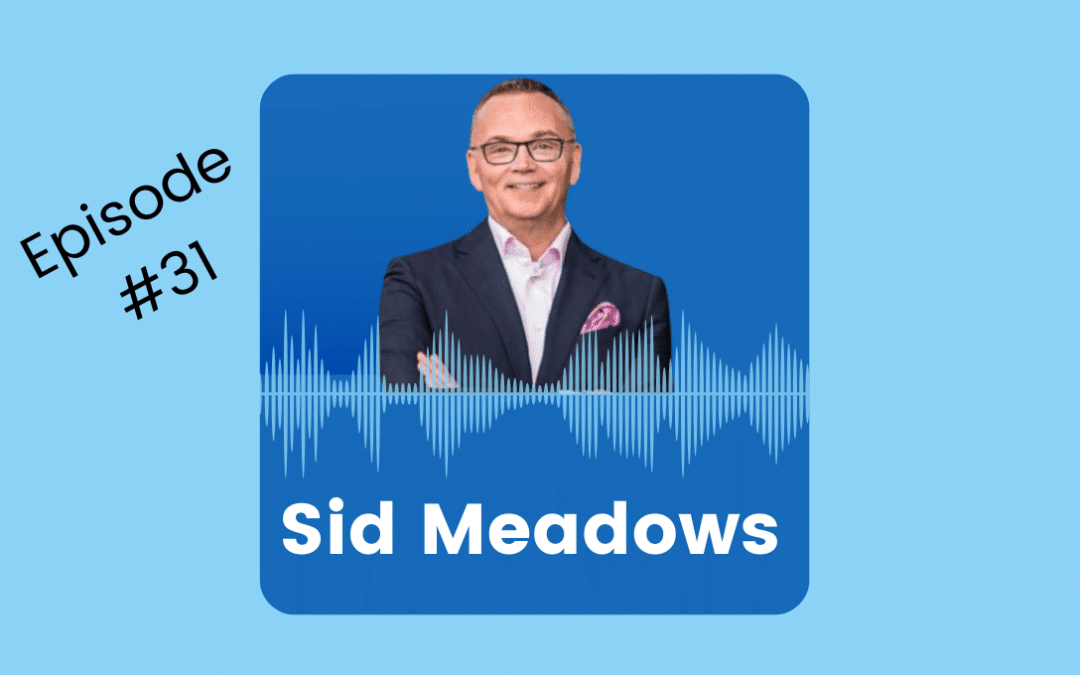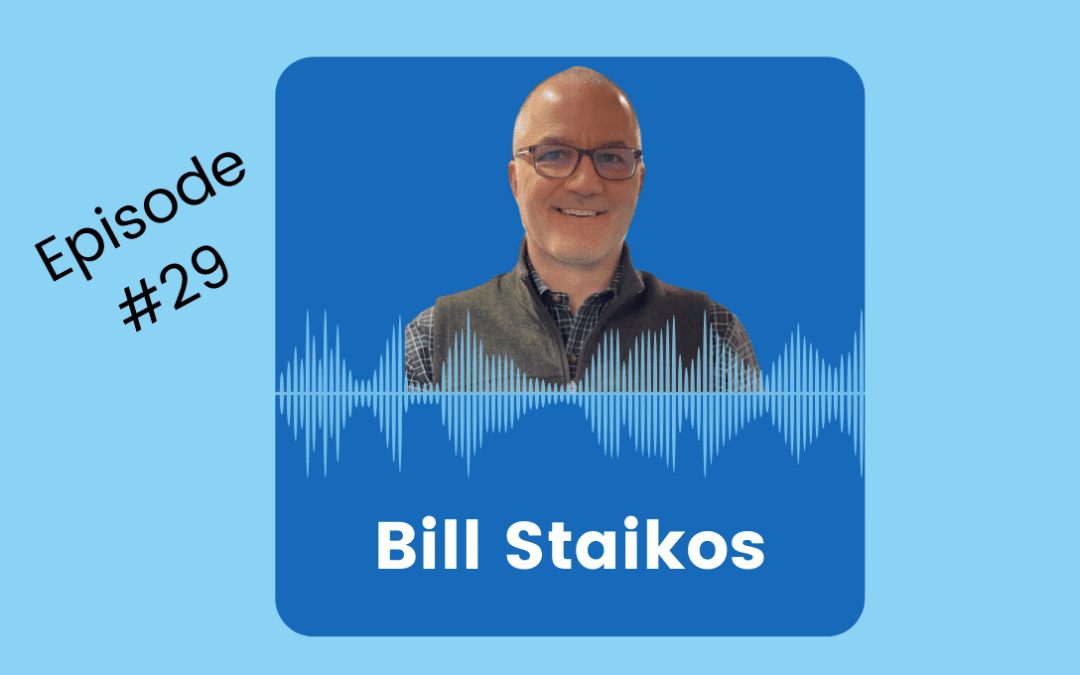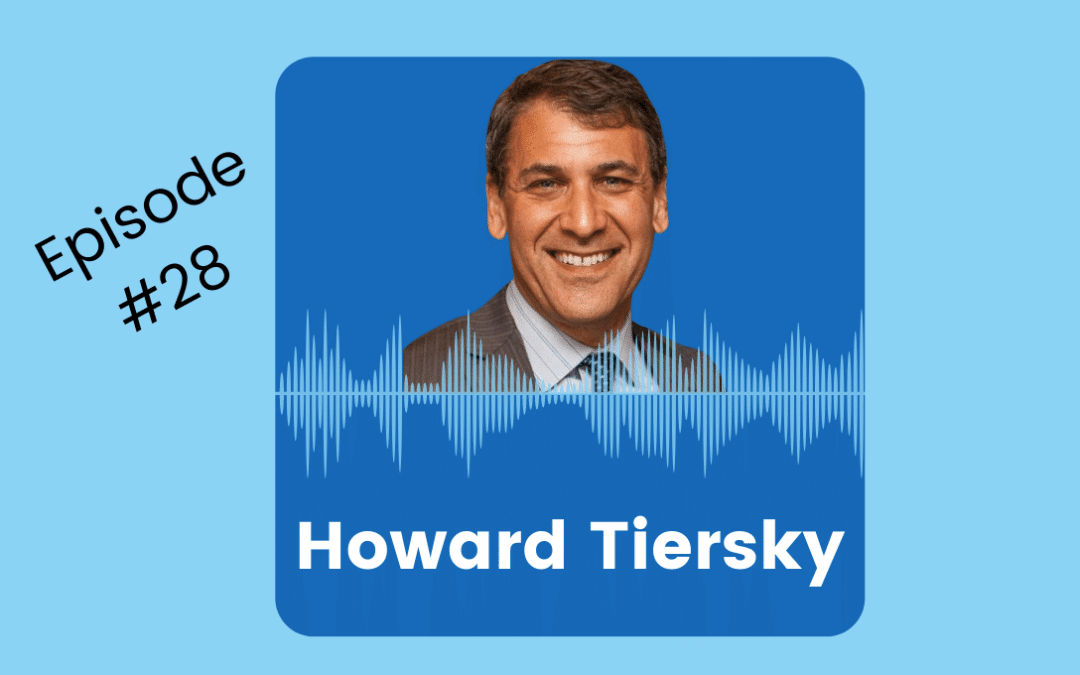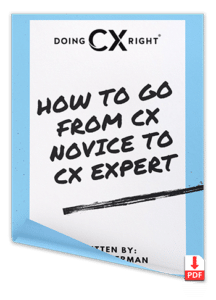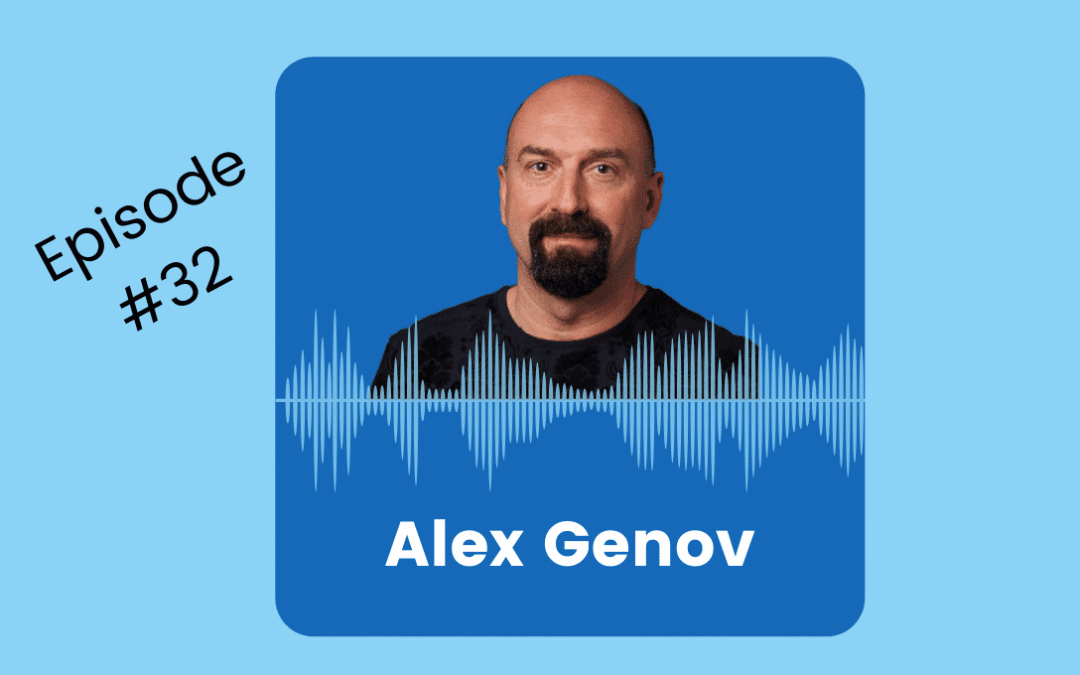
Solving Customer Pain Points Through Research, Design and Innovation
What can you learn from a model customer-centric brand like Zappos to achieve real innovation and customer success in a competitive marketplace? Featured guest, Alex Genov, Head of Customer Research at Zappos, provides answers to these questions and much more.
Topics include:
- How do you define innovation?
- Is it different from invention?
- What are the different types of innovation?
- What are the 4 pillars that make Zappos so extraordinary from early on?
- Examples of what employees do to make work-life extra special for retention.
- Why is innovation so rare?
- What does it mean to be “stuck in traffic” and how to avoid it for innovation?
- How leaders can understand customer pain points & act on “voice of customer” (VOC). Plus, what NOT to do?
- The one key takeaway Alex wants you to remember.
Watch Stacy Sherman’s Interview on Youtube
PODCAST TRANSCRIPT
Solving Customer Needs Through Research, Design and Innovation
Stacy Sherman: Hello, Alex Genov. Welcome to the Doing CX Right show.
Alex Genov: Hi Stacy. Good to be here.
Stacy Sherman: I am excited about today with you because Doing CX Right requires being intentional. It requires really walking the talk and you, and the brand that you work for actually are the real deal. So I’m so happy you’re here. Let’s start off with who are you, what do you do?
Show More
[00:00:44] Alex Genov: That’s a great question. Stacy, who am I? I don’t know if I really know who am I. Do we really know who we are?
You know, my wife, my kids, you know, they’re going to give different answers. Who am I? So Alex Genov. I head up customer research at Zappos, and also, I’m a family man. Married. We live in Las Vegas, which is the entertainment capital of the world. We also have 2.4 beautiful children and a little Nicholas is 0.4.
And I keep telling him, you know, he’s going to grow up to be a 1.0 human being I was pulling for when I was growing up. So I can do this little comedy bit for awhile, but it is related to what I really care about, which is applying my social psychology background to, to now helping organizations understand customers as people.
And that’s one of my main roles at Zappos. And what I’ve been trying to convey in the past few years is this the need for this balance between looking at numbers, right? And, and a lot of organizations are focused on that and understanding customers as people and balancing.
Ooh, that’s a really good topic, especially because I was on a call before, around how it was all data, data driven.
And I was the speaker bringing the heart to the conversation. So you’re definitely touching a cord for me right now. I wish you were on that call with me. So why, why do you care so much about this.
Because who knows why, what sparked my interest in psychology. I’m originally from Bulgaria and back in the day I was studying, I studied for a year in this Institute of economics back in the day.
And, then I decided to come over to the states and I picked psychology and it was I mean, I can’t explain why I was interested in how the mind works in humans in general. And so what makes us tick? So then I came and started studying psychology as an undergraduate and then continued on to graduate school only because I was on a foreign student visa and I had to keep my status.
Not that I wanted to keep studying for psychology for 10 years. But that’s you know, it’s hard to explain, but I’m interested in this, the human side of things. And I also see the need to have this counterpoint in a way or this complimentary point to our emphasis on data and algorithms and so on to bring the other side, because I’m always striving for balance.
And I think if we just say numbers are everything and algorithms are gonna solve everything I think that’s the balance gets off kilter. If the balance is tipped the other way and say, we only have to understand emotions and humans and individual people, that’s not going to work for the business setting either.
So somewhere in the middle, and I’m trying to bring that balance a little bit.
What’s one fun fact people might not know about you.
Fun fact. I’m a big fan of Shaolin, Kung Fu and I studied Kung Fu in Vegas. There’s a shouting master that we’ve been studying under for six years now. And I’ve also been to shouting temple three times, studying there and then training.
And even one time they gave us they ordained us as, as disciples, which we totally did not deserve to be ordained as disciples after a week of training. It takes about 10 plus years, 20 years, but that’s a, that’s a fun fact, I guess.
[00:05:14] Stacy Sherman: So let’s get to the heart of the conversation here about customer experience.
You speak right about innovation. What does, how do you define innovation?
[00:05:29] Alex Genov: Great question. There is this, my perspective on innovation was really influenced by a comment. I heard a very insightful comment from a panelist years ago at a conference and that person, I don’t, I don’t remember the person’s name now, but he distinguished between innovation and invention.
And that, to me, that struck a chord with me. And he had different the way he defined invention was creating something new, something new, something exciting, something that hadn’t existed before, maybe technical, maybe otherwise. But it’s invention is different from innovation in the sense that for something to be an innovation.
And that’s according to this definition, of course, but it has to have a real impact for people’s lives and for the business. So only when an invention starts giving a real impact and solves an important problem, then it becomes innovation. So a lot of, I kind of have a pet peeve with, you know, obsession with things that really innovation that is driven by technology.
So technology first, for example, which to me, is the cart before the horse and things that are in a way solving problems, if you will. Right. That, I mean you can argue with that, but there’s a lot of these startups that solve the problem of overcrowded inbox or your mailbox, email mailbox is full and they have innovations to solve that right.
There’s a host of those so-called innovations. I have, I personally have a problem with that because I’m always thinking. From the customer perspective, is it really a problem for people? How many people have this problem? And then if you solve it, isn’t going to make people’s lives easier. How many people are going to be affected and can that propel meaningful businesses as well?
[00:07:51] Stacy Sherman: Do you believe that Zappos is a good model around innovation. We know they’re best in class. Is that where you’re really learning about what innovation means and is that what’s part of what makes them so great.
[00:08:13] Alex Genov: Absolutely Stacy. I think Zappos is so well-known and such a great company and a great business because
early on, and even now they innovate that they’re based on innovation. I think one of the, one of the additional points that I should touch upon in terms of innovation is that there’s different types of innovation. There’s technical innovation, but there’s also business innovation on business models.
There’s innovation on how you just run the business. Here’s to me what made Zappos Zappos early on. It was this genius inside that thing that what will differentiate Zappos in the early days is going to be reliance on customer service, focused on customer service. And it’s, this really counter-intuitive moves that propels businesses.
As a lot of them were in a world where even now the vast majority of companies, I believe considered customer service to be a necessary part, but something to be, you know, a cost to the minimized. Right. And marginalized. And so, and so that trickles down and results in a lot of decisions that then affect the customer negatively.
Instead, what Zappos decided early on was you know, Donna Shan, the company, basically decided people that buy shoes elsewhere too. Right then the dominant mode was even nowadays is, is in store. So they said, why would people come to Zappos? What we’re going to do is we’re going to make customer service our top priority.
So that’s counterintuitive thinking, I think led to the success, just like in other areas like for example, Zappos is part of Amazon. And one of the most successful businesses within Amazon is Amazon Prime and that was another counterintuitive move to say, we’re going to create the program loyalty program where people are going to pay to participate.
Right. And again, or even does Amazon brilliant move early on by, by Jeff Bezos to say, you know what when they created their own line platform, which wasn’t like an online store, they said, you know what, we’re going to give our competitors space on our shelves to sell their stuff. And then again, people said
that was crazy, but those counter-intuitive moves are the ones that pay off. So to answer your question, yeah Zappos is based on innovation and now even more so than before, for example, after the pandemic hit Zappos, not only survive but thrive because it was online set up for online and then very quickly as Zappos pivoted to help their vendors and help their partners in the sense.
They will start coming up with a whole journey of business models, not just wholesale, but also dropship, consignment, and all these other models so that, you know, they will help their partners with inventory issues, with supply chain issues very, very quickly that it would happen.
[00:11:53] Stacy Sherman: So what could other companies, small and big learn from Zappos?
[00:12:01] Alex Genov: I think they can learn a lot. And you know, we have a group within Zappos, Zappos insights, and before the pandemic people, companies, and individual people would tour Zappos. I mean, come to learn from Zappos. It was almost like a university for this kind of success with culture and with focus on the customer.
But the main, I think lessons are well, number one, focused on the customer and not only on the customer but focus on your relationship with your vendors, with your business partners. At the end of the day, it really boils down to human relationships, right? The relationship with your suppliers, with your vendors, with your employees, and with your customers, and with the community.
So these are the four pillars for Zappos is the commerce part. It’s the customer. It’s the community and the culture. So these are the four pillars. But, at the end of it at the bottom of it is all relationships.
[00:13:08] Stacy Sherman: Yes. I agree. It comes down. Data again is important, but it’s the relationship.
It’s the communication that makes brands win and it’s in our control. That’s right. It doesn’t require a lot of money to communicate and to appreciate people and your customers and keep it real.
[00:13:33] Alex Genov: Exactly. And in terms of just company culture, to your point, it’s the little things it’s not really a big, expensive programs.
So I’ll give you a couple of examples from Zappos. And back again before the pandemic, where everybody was on campus and the culture was really vibrant and in-person every team had a budget that we had to spend on eating and drinking together as a team every month. Right. So that was almost like a requirement, you know what I mean?
So go spend this money to have fun and to bond. So that’s why I’m. So now it’s moved a little bit when we’re working from home, it transitioned to the digital round. So now we have these online lunches and we get, or, you know, delivery. So we have some money to get or some food and we still sit around and it’s not the same of course, but the spirit is the same.
And then. Little rituals, daily rituals, examples cause there’s automated email that comes out every day with every employees on that day, birthdays or anniversaries work anniversaries. So, so simple. I mean it comes out and then it’s up to everybody to do whatever they want with that. But I, for example, take time to just say happy birthday and happy anniversary, even to people that
I haven’t met, I don’t know personally. Right. But still, it creates this, then I get a thank you. And then when I see them, they recognize me, thank you for sending me this email. Right. And so that creates the bond. It’s these little things.
[00:15:21] Stacy Sherman: Yeah, exactly. Micro-moments. You talk a lot about
stuck in traffic. Brands and leaders are stuck in traffic. What does that mean?
[00:15:36] Alex Genov: Well, I don’t know if I talk a lot about it. I wrote years ago I wrote this little piece on LinkedIn. It was quite literally about traffic and it was in the I think the way, like your phrase it feels like I’m using it metaphorically.
I mean, when I wrote this out, I wrote it literally, and it was in the context again of innovation. Is innovation solving important problems and problems important for society? Problems important for business on a larger scale. So that was the idea. And then it was more of a rhetorical question. Why aren’t you solving the problem of traffic versus all the things that sound fun?
I have a pet peeve about the cart before the horse, right? There’s a new technology and now people are excited about it. They say, now, how can we apply? Right. And then let’s innovate. But it’s not based necessarily on first understanding any important problem or jobs to be done. This framework, backplate Clayton Christianson is one of my favorites.
What job is this solving for people? And if it’s not done starting from the customer need or an important business need, then it feels contrived and things like chatbots. Again, it’s a technology now let’s see how we work and plug it in. Right. I think it becomes this annoying kind of clippy like experience, just a different more modern version of clippy. But again, I think the root cause is we have this technology, now how can we use?
[00:17:31] Stacy Sherman: Going back to your traffic scenario, it is symbolic of pain points. I mean, traffic anywhere is a pain point. The question is how do company leaders really understand their customer pain points?
What’s your view on that?
[00:17:49] Alex Genov: You know I can’t speak to all company leaders. I’ve worked for several big and small companies and all of them have been customer-centric to one extent or another. So for example, Intuit, they were, they are one of the most customer-centric companies out there.
They’re known for their research and for UX and so on, and it’s driven by leadership. And Scott Cook was the founder was the one who initiated a really interesting. Back in the day I mean, this was many, many years ago when I was maybe 30 years ago when he founded QuickBooks or Quicken back in the day.
So personal financial organization software, it was based, of course, that’s pre-internet, it was based on CDs and like a big part of it was the time when he released Quicken and he would go to the store and observe when somebody picked up the box and then he would approach them and ask them, can I come home with you to see how are you using?
So these are, I mean, in research, that’s called contextual inquiry or a form of ethnographic research, but it’s really, it was modeled by the founder of the company. And then it became part of the, part of the DNA of the company.
So, Zappos is the same way. When everybody joins Zappos, and again, my experience was pre-pandemic, all of us spent the whole month in intense customer service training. Think about it. You join a company regardless of your rank or whatever you did before? So when I did my new hire training, we had about 40, 45 people.
Some have been in the food industry in Vegas servers, waiters, waitresses. Some had been VPs in other companies. In that moment, that didn’t matter what you were before. You’re just an individual. And then, on the second day we got on the phones helping customers, and it’s the most humbling experience. That’s how, you know, one of the ways in which
every Zappos employee would get in touch with the customer, understand customer pain points. And then later on, everybody has to spend about 10 hours every year around holidays on the phones. So we call it holiday help. The CEO is there, everybody’s there. So I think it just a matter of a mindset to say let’s understand customers.
And then the activity itself, you can come up with a lot of activities to do that.
[00:20:55] Stacy Sherman: I love those examples, and I also believe that it’s easy, you have to be intentional, to pay attention, look what people are saying on social media and ratings and review sites in addition to what you are collecting in a methodical way.
[00:21:16] Alex Genov: It’s available, and so that’s the more of a passive collection of feedback because people are talking about companies, especially social media is a natural platform for that conversation. It’s like happening but then also within a company. So examples, at Zappos, we have a voice of the customer program and we intentionally started it and we’ve been going on a journey seven plus years to develop it, to start collecting feedback and then to evolve it, to start using text analytics.
So this one case where we cannot do it without AI. And the bigger the data set the better because we get more signal and less noise. And we’ve been on a journey to do that now to the point where our executives are reading comments. Our CHCO is reading comments every week and encouraging executives to take them seriously and also encouraging us to drive for this balance because again, you can, you can tip the balance. If you just read the comments and you cannot go and start investing and changing the software based on one or two comments, right? Sometimes the comments are even saying something like your checkout sucks.
I couldn’t count on such comments, go and start changing check-out. You have to really first understand what really happened. So you have to connect that comment to see what actually happened during that session, understand the root cause, and then estimate how big that problem is, how many people have that issue, and then that will help the businesses prioritize the work. So, that is what we’re in the middle of right now.
[00:23:17] Stacy Sherman: Yeah, I believe it’s so important to aggregate all the voice of customer channels so that you don’t respond to the one-offs, but rather the scalable things and the multi-channels coming together so you can prioritize. That’s gold. That’s how you win.
[00:23:37] Alex Genov: Exactly. And, that’s why you need to have one of the tactical things that need to be done is to connect all those dots. Collect them in one database. That’s the point. If you dispersed in different databases, then you have nothing,
[00:23:52] Stacy Sherman: But, for small companies who don’t have Zappos budgets and other brands you’ve worked at, and myself, you can start small.
Have somebody whose role is to aggregate even if it’s manual or use tools that scrape the internet and then really pull into some of the activities that your company’s doing. I don’t want people to be afraid to actually do what we’re talking about. It just starts somewhere and then you evolve.
[00:24:25] Alex Genov: Exactly. I mean, that’s a great point. To your point, the size of the company doesn’t matter. The principle is the same. Put everything in one place. So let’s say Zappos is a big company. It’s part of Amazon. We have tens of millions of customers, right? So we have this big database and so on. You can be a small company. All you need is an Excel spreadsheet. The principle is the same. Put everything in that Excel spreadsheet. And then the customers should be one row and the columns should be all the variables you’re collecting. It doesn’t matter where. You can put it in a notebook.
So, why I’m a big fan of the idea of hospitality as a metaphor for customer experience in general even online. I’m a huge fan of Danny Meyer who was a New York restaurantor. Very famous. He wrote the book, Setting The Table, and talks about collecting the dots so we can connect the dots.
He is famous for creating these amazing experiences, dining experiences. That’s what he did for each customer he would keep notes or he would encourage employers to keep notes of their favorite foods and their anniversaries and everything. And they kept it on cue cards or pieces of paper.
So it doesn’t matter. It’s the end result. The intention is what matters.
[00:25:46] Stacy Sherman: We’re coming down to the end, which came too fast, as always. So, I’m going to ask you my two ending questions, which is if I had tons of CEOs and leaders and entrepreneurs in my room right now, what’s the one key takeaway you want them to remember?
[00:26:07] Alex Genov: I would say it’s the takeaway of balance when it comes to understanding numbers and running the businesses. Bounce between reading the easily manageable, big data, structured data, the numbers, but also balancing that with an understanding of customers as human beings, as people. It’s more qualitative, but to me, it’s still needed.
So, balancing those two. Once you hit that balance, I think that’s when the magic is going to happen.
[00:26:41] Stacy Sherman: I agree. Yes. Yes. And finally, if you could go back to your younger 20-year-old self, what would you tell younger Alex that you know now that you didn’t know then.
[00:27:00] Alex Genov: Don’t get too wound up about being right. I don’t think that’s that important. But when you’re young, you’re starting out, you’re kind of insecure and you feel like you need to prove you’re the smartest person in the room and you take things personally. You can’t take things too seriously. That damages relationships. And so that, to me, I don’t know if I would be more laid back about things.
[00:27:30] Stacy Sherman: Great words of wisdom. Well, where can people find you? And I’ll add links in the show notes if they want to connect.
[00:27:40] Alex Genov: I think LinkedIn is probably my platform. I’m a fan of LinkedIn.
So that would be a good spot.
Stacy Sherman: Wonderful. Well, thank you, Alex, for sharing so much about Doing CX Right from your personal perspective as a consumer, as an employee, and as a human being in this world. Thank you.
About Alex Genov ~ Solving Customer Needs Through Innovation
Experienced customer research professional and CX leader who applies his Experimental Social Psychology background and his passion for research, design, and innovation to solving important customer and business problems.
Professional career spans 20 years and different industries ranging from insurance (State Farm) to personal finance (Intuit/Turbotax) to B2B (Active Network) to retail (Zappos).
Alex’s goal is to help teams create remarkable products and services which make people’s lives easier and more enjoyable.
More about Alex on LinkedIn.
About Stacy Sherman: Founder of Doing CX Right®
An award-winning certified marketing and customer experience (CX) corporate executive, speaker, author, and podcaster, known for DoingCXRight®. She created a Heart & Science™ framework that accelerates customer loyalty, referrals, and revenue, fueled by engaged employees and customer service representatives. Stacy’s been in the trenches improving experiences as a brand differentiator for 20+ years, working at companies of all sizes and industries, like Liveops, Schindler elevator, Verizon, Martha Steward Craft, AT&T++. Stacy is on a mission to help people DOING, not just TALKING about CX, so real human connections & happiness exist. Continue reading bio >here.





